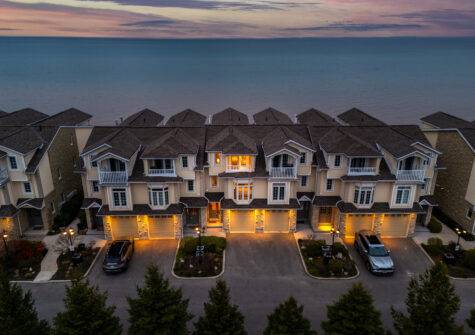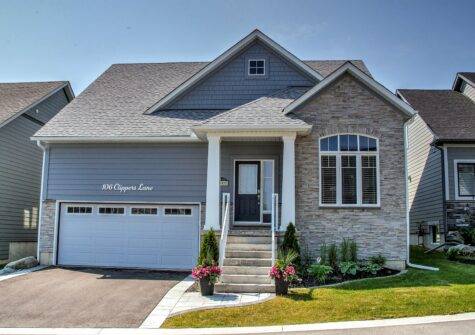By Stephen Punwasi
Canada plans to increase credit access for the country’s riskiest borrowers in the years to come. A re-elected government may not seem like change, but they promised a big one — larger insured mortgages. High-ratio borrowers will see an increase of up to 25% of their maximum mortgage size. Expansion of credit during a low inventory market is one of the fastest ways to increase prices. It was one of the primary drivers of growth during the US real estate bubble, prior to the Great Recession. It’s an odd policy to embrace, and likely to push prices higher, or at least prevent them from falling.
Canadian Insured Mortgages To See The Max Increase By 25%
Canada is planning to increase the maximum that can be borrowed on a high ratio mortgage. High ratio mortgages are those where the buyer puts less than 20% down on the purchase price. Currently, buyers are limited to home prices of less than $1 million. If the proposed changes go through, this will increase by 25% to $1.25 million.
Further, the high ratio maximum will no longer help to slow growth for cheaper housing. It will be indexed to the Consumer Price Index (CPI) as well. This is somewhat ironic, since shelter costs are nearly a third of the CPI index. Bubbles will now self-adjust as they push the credit boundary higher. It’s the human centipede of mortgage plans.
High-ratio mortgages were originally designed for low-income households to break into the market. It makes sense for taxpayers to take on that sort of risk, since it helps build the middle class. That’s not what’s happening here. To take advantage of a $1.25 million maximum mortgage, a household needs at least $155,000 per year in income. In addition, they would need at least another $250,000 for the down payment.
In other words, the boutique change is designed for higher income households. At that income level, they would be making about 72% higher than the median household. It’s just under the cutoff for the top quintile of household incomes. Hey, I guess that’s what a first-time homebuyer makes now. Over two-thirds more than a typical household across the country.
Expanding Access To Credit Pushes Home Prices Higher
Credit expansion during a housing boom leads to higher home prices. It’s straightforward to anyone that thinks about it for just a second, but let’s walk through this. Buyers and sellers have competing interests — the former the lowest prices, and the latter the highest. In the event of low supply availability, the negotiation slants in favor of the seller. The problem is they can only take as much as the buyer can borrow, and not more. Prices are capped by liquidity, and this is a market fundamental.
What do you think happens in a low supply environment, and the government gives the buyer 25% more money? It’s now the seller’s obligation to extract that additional capital. The increased credit gets capitalized into the price, pushing prices higher. Since these are first-time buyers, it acts primarily on the price floor. In other words, it pushes up the cost of the most affordable housing. It has little impact on the most expensive stuff.
It’s not just a theory, there is plenty of evidence supporting how this works. It was found to be one of the key reasons behind the US housing boom that preceded the Great Recession. BMO recently warned against this type of action, since the market would only absorb it. Even the Bank of Canada (BoC) internally acknowledged credit expansion drives home prices higher. Now that this is established, let’s talk about who influences home prices — the marginal buyer.
The Marginal Buyer Will Determine Which Markets Are Impacted
Credit expansions push prices higher everywhere, but not equally across the board. How much they increase depends on an important market concept — the marginal buyer. A marginal buyer is the person (or company… or gang) that pays the most. It’s a small portion of buyers, but they’re the ones that actually buy stuff. They set the pace of the game, and ultimately the price people pay.
Most think affordability depends on the general population, but it depends on liquidity. If the marginal buyer is there at the time of liquidation, it doesn’t matter if the majority can’t afford it. The person who can afford it was there, and just bought it. The pool only needs to be as big as the supply sold.
Some marginal buyers are rational and calculated. Real estate developers, commercial property investors, and institutional landlords would be examples. They can’t pay whatever they want, even if they have the money. It needs to make sense financially for them to tie up the capital, and that’s based on the utility of use. They have to think of who the next buyer is going to be. This is why developers scoop most land during the bottom of a real estate cycle… or when the government will pay for it.
Then there are irrational marginal buyers, which are extremely popular in Canada. There are intentionally irrational ones, such as money launderers and organized crime. These people need to move large amounts of money, so it doesn’t matter what the price paid for the home is. At least to them. If you’re competing for the house, you might not know their objective is to pay the most. If you don’t know they bought the house next door to the one you’re looking at, you might not realize it’s an inflated comp. We’ve already talked about how just a few of these buyers can move whole markets before.
Unintentionally irrational buyers are the ones most likely to use this program though. These include FOMO buyers driven by exuberance, almost like it’s a game (ever heard we “won” a bidding war?). They might say it’s not about making money, but they have already acknowledged they will. FOMO buyers perceive the pain of paying more today will be less than the pain of paying more later. As a result, they’ll pay as much as they can today — it only goes up, right? It’s always a profitable scenario in their mind.
Another unintentionally irrational buyer is deep-pocketed buyers new to an area. There’s a lot of focus on foreign capital, who are often paid much higher wages overseas. However, there are also interprovincial marginal buyers. Buyers migrating from Toronto to Halifax are contributing to higher home prices. These are the types of buyers most likely to take advantage of the credit expansion. If you want a home, you now have to compete with them.
That’s who drives the cost of housing — a marginal buyer. In cities like Toronto and Vancouver, upping the maximum size of an insured mortgage is likely to push prices higher. Or at the very least, they’ll give people more cash to put a drag on falling prices. A market is only as rational as the marginal buyer, who might not be rational at all. Arming them with more money is sure to make things worse, not better.





